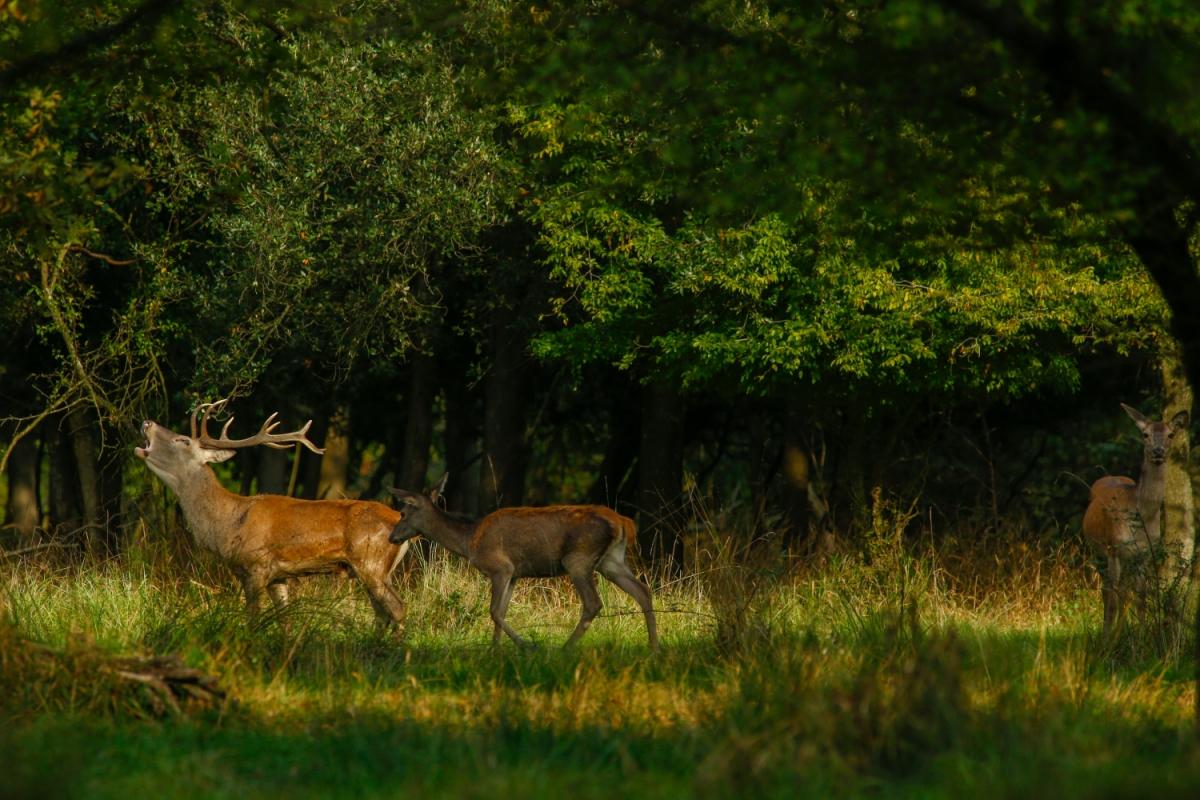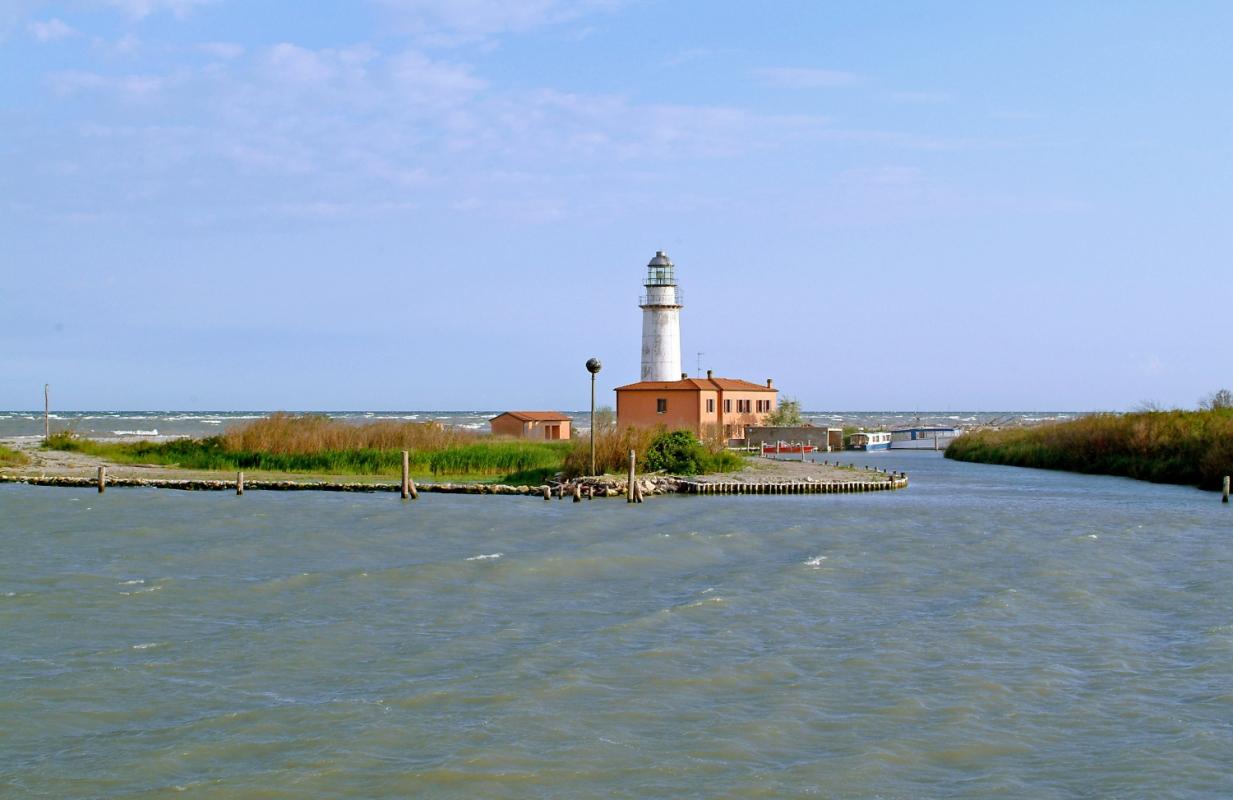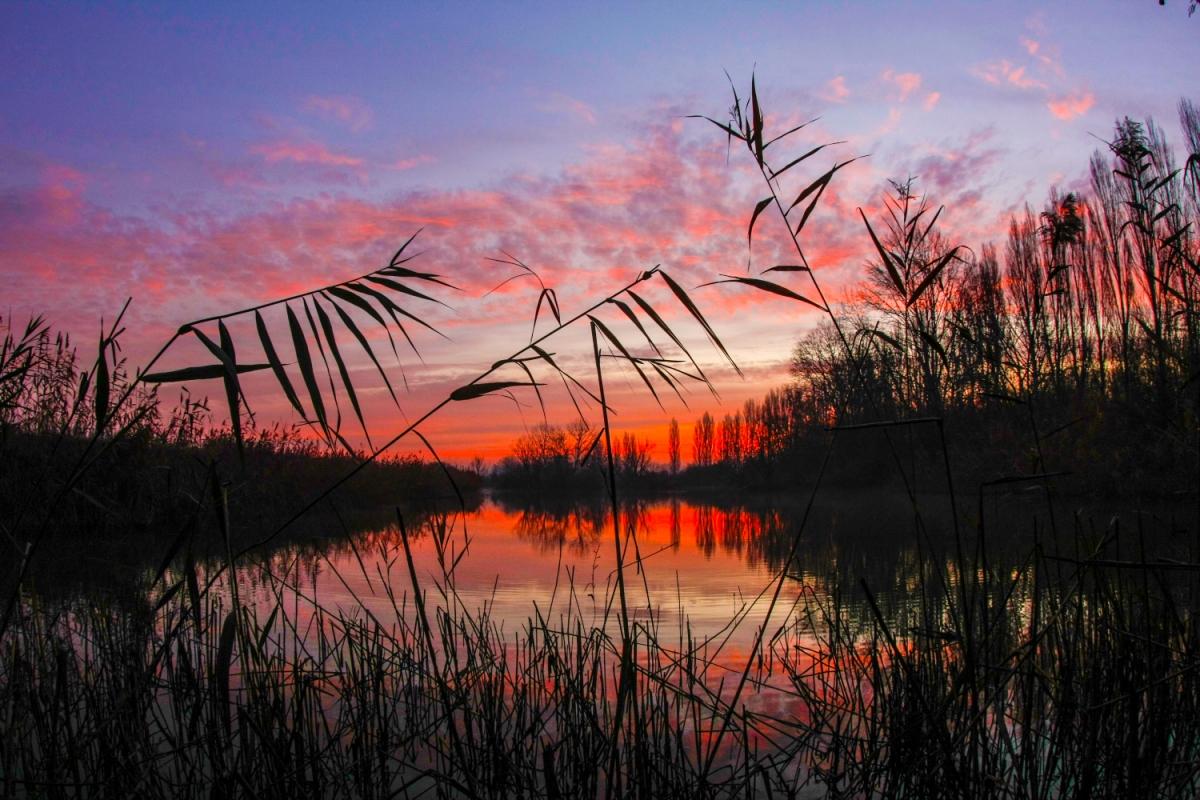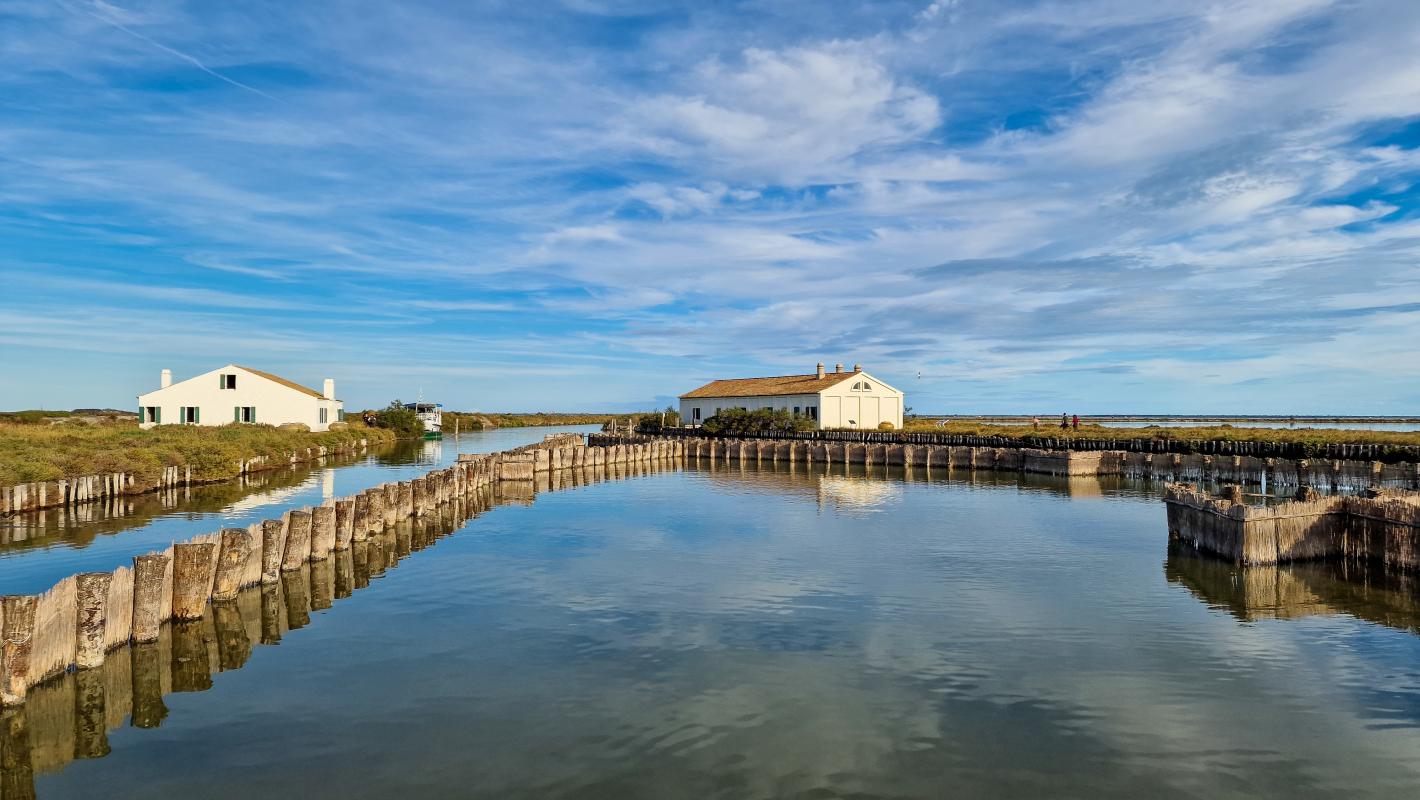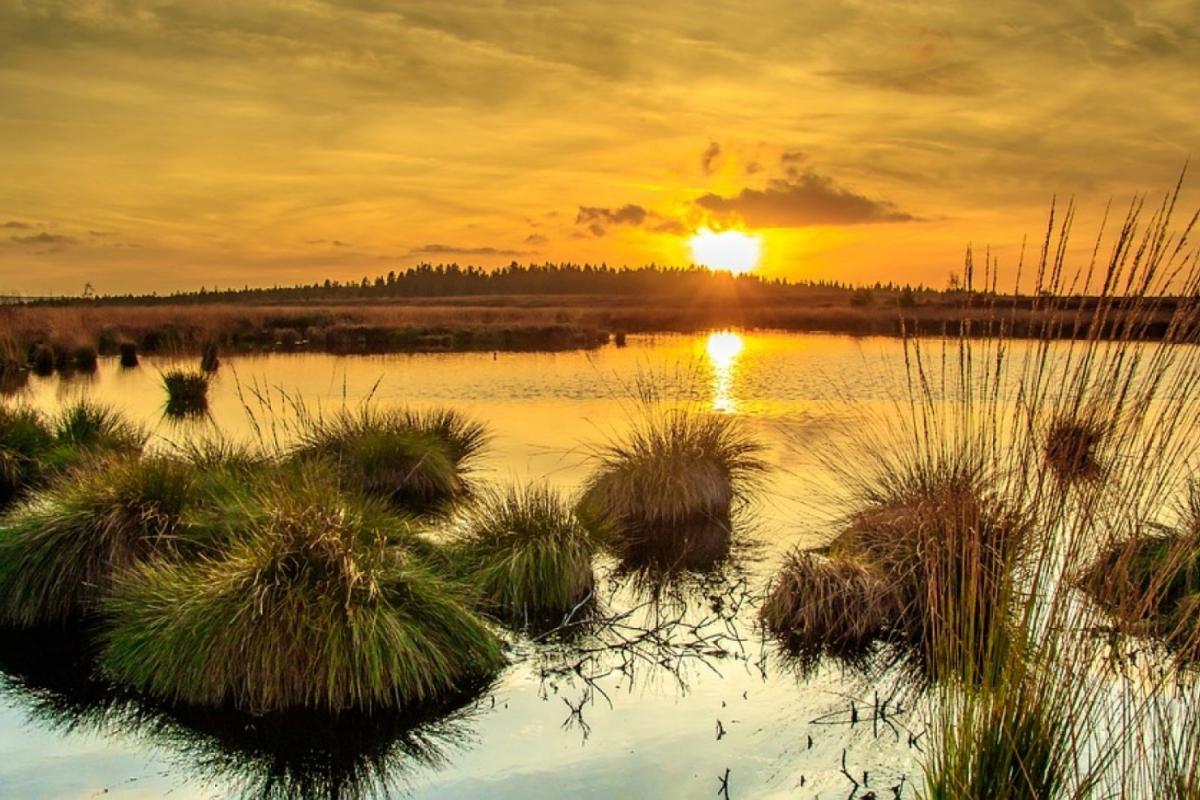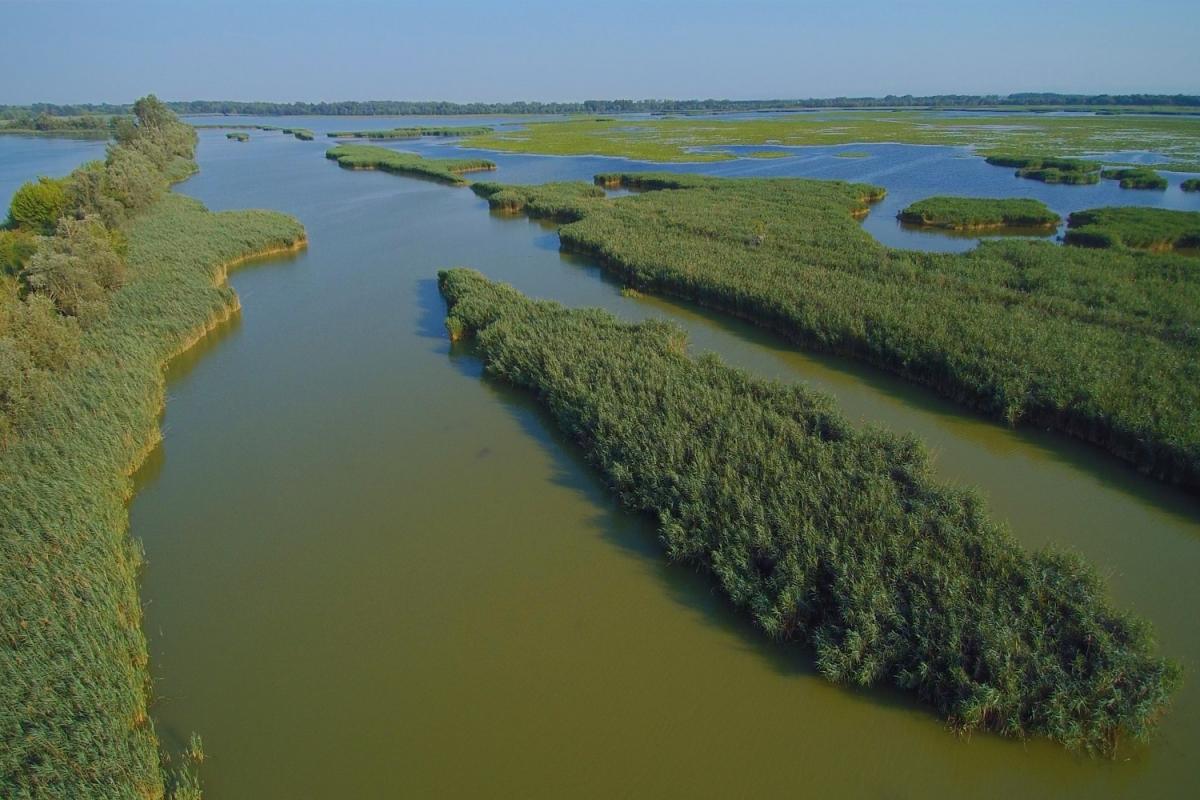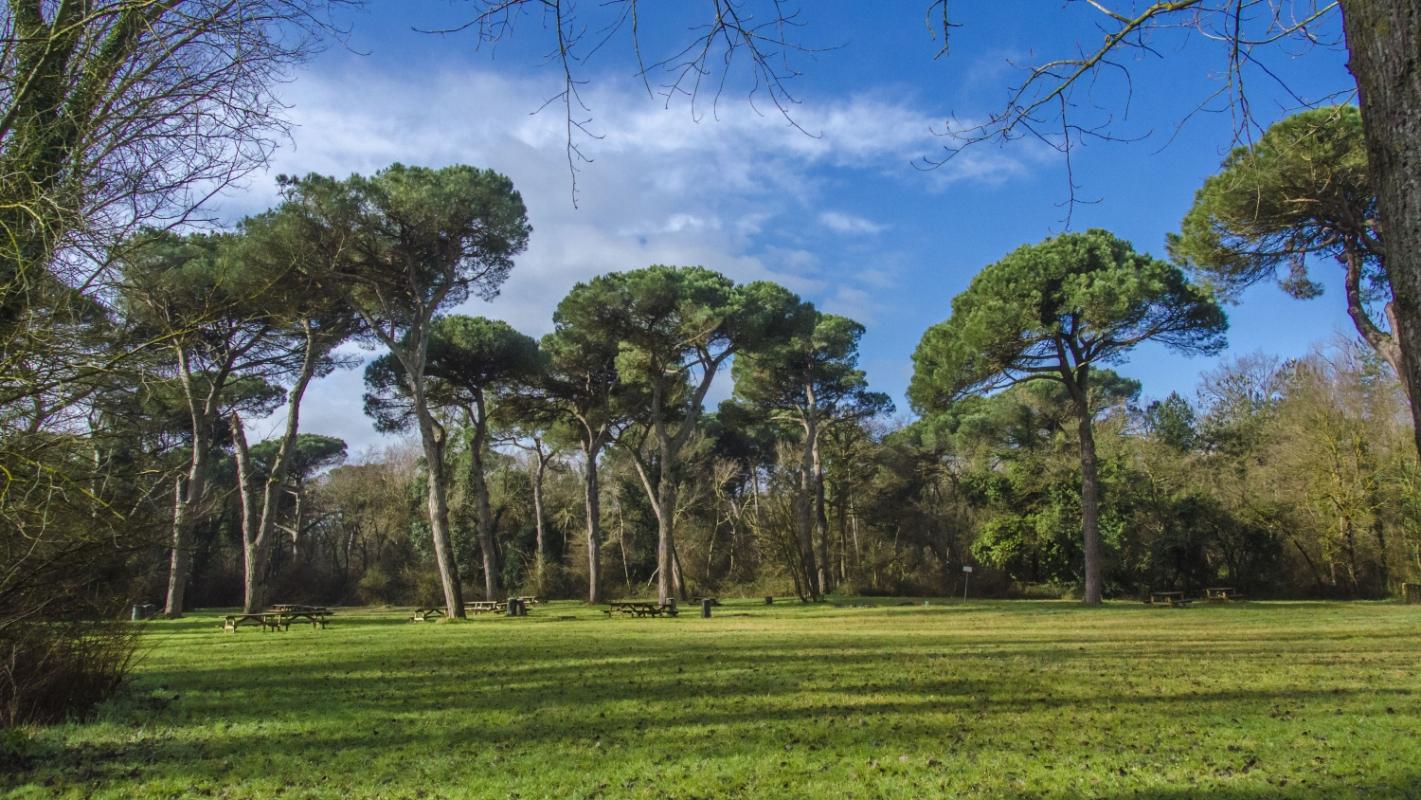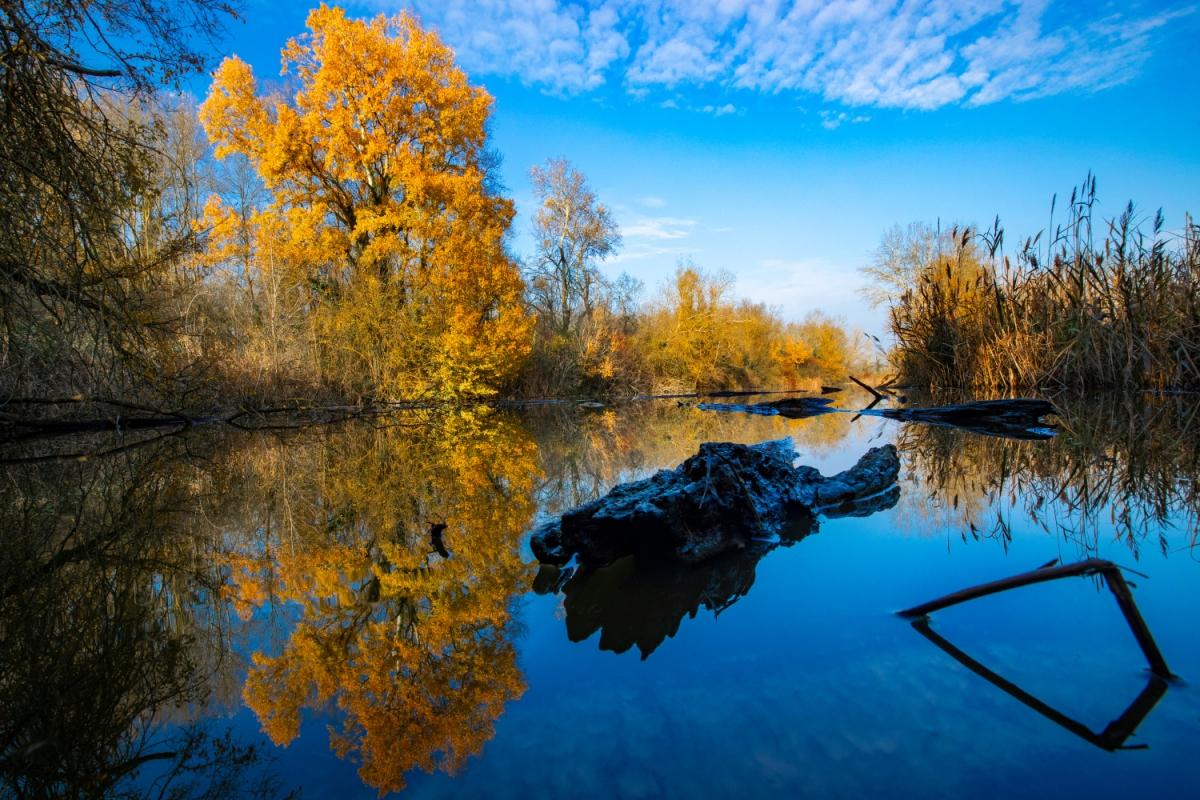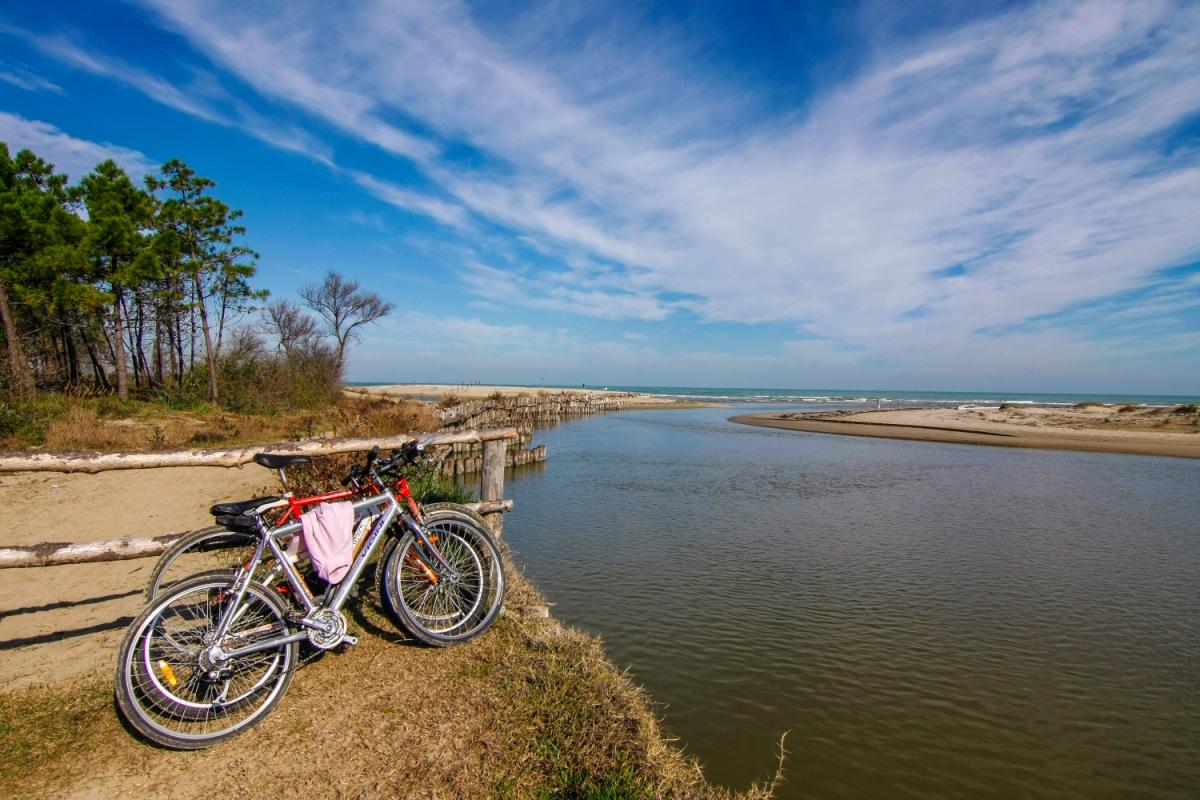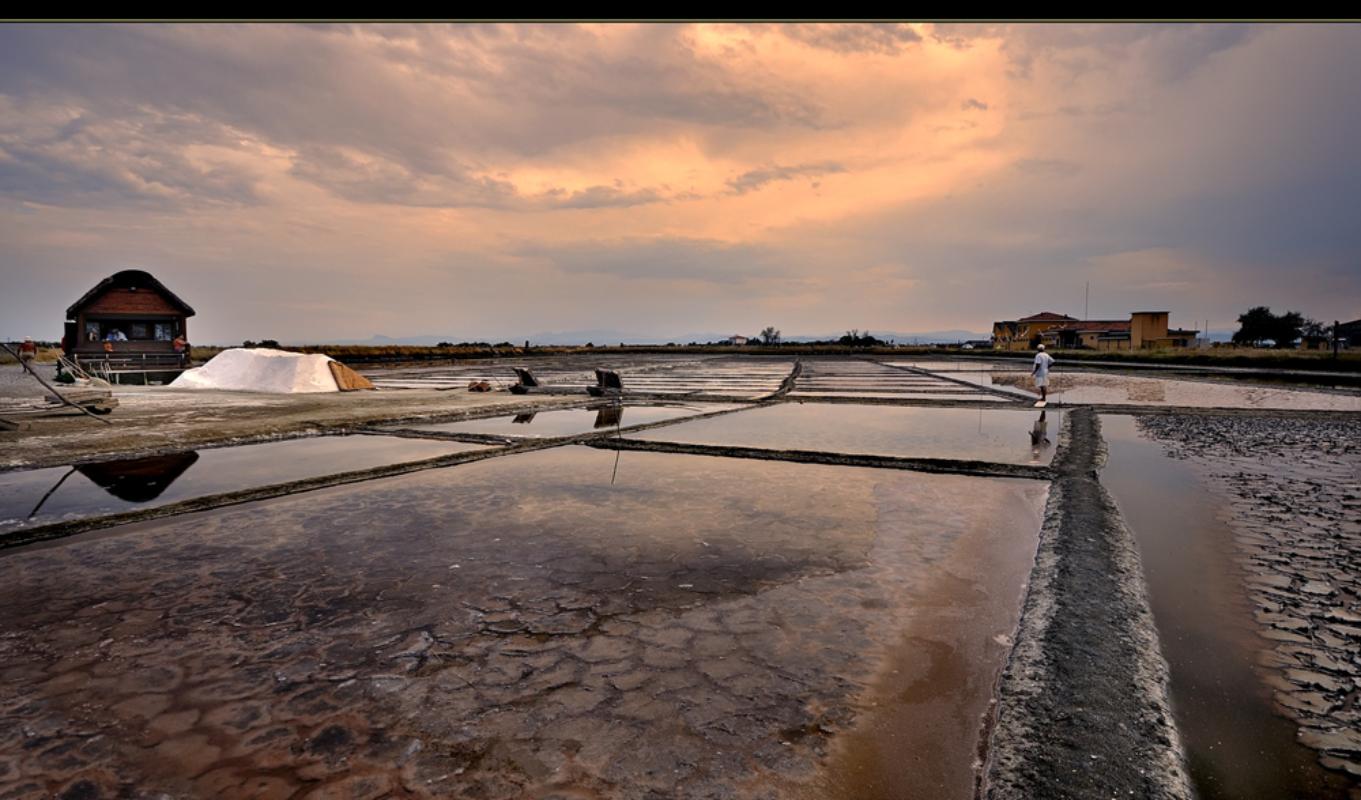PLACES NOT TO BE MISSED
The largest wooded area in the province of Ferrara, with a surface area of 1,058 hectares, this is one of the last and best-preserved remains of a lowland wood, a reminder of the ancient forests that existed along the Adriatic coast until a few centuries ago. This is the Riserva Naturale del Gran Bosco della Mesola (The Great Mesola Wood Nature Reserve), known above all for the presence of the Mesola Deer or Dune Deer, the only descendant of the Noble Deer that originally populated the Po Valley. The woodland, which extends over a system of ancient dune belts, has typical Mediterranean scrub vegetation dominated by holm oaks and can be accessed on foot or by bicycle along authorised routes.
There are three routes of different lengths, varying from one to three hours, along which it is possible to observe the descendants of the ancient deer population, today flanked by numerous fallow deer, a recently introduced species. Also of interest is the marsh turtle, which can easily be observed along the canals that cross the woods. The terrestrial turtle, which is the subject of a protection programme, is also quite common. Birdlife is represented by various types of Silvidae such as the Blue Tit, Great Tit, Blackcap, Nightingale, Brambling, Golden Oriole and Hawfinch, to name but a few. There are also the Woodpecker and the Green Woodpecker, the Hoopoe and a large resident colony of Woodpigeon. Five species of nocturnal birds of prey usually frequent the wood: the Barn Owl, the Little Owl, the Long-eared Owl, the Tawny Owl and the Long-eared Owl. The best time to visit the wood is undoubtedly spring, when the birds' songs are at their loudest.
CONTACTS FOR EXCURSIONS ON FOOT, BY BOAT AND BY BICYCLE:
PO DELTA TOURISM
Tel. +39 0533 81302 - 39 346 5926555
E-mail: info@podeltatourism.it
Site: www.podeltatourism.it/it
AQUA
Tel. +39 0426 662304
E-mail: info@aqua-deltadelpo.com
Site: www.aqua-deltadelpo.com
The Sacca di Goro is one of the largest saltwater lagoons in the Upper Adriatic Sea, enclosed by the Po di Goro and the Po di Volano. A part of the sacca, called Valli di Gorino (Gorino Valleys), includes areas of near-natural oases, with reed beds and sandbanks, while the area bordering on the sea is delimited by a long strip of sand known locally as Scannone di Goro, better known as "Isola dell'Amore" (Love Island). This is a very recent strip of land that emerged as a result of the deltaic advance of the river Po and is a favourite haven for numerous birds. The characteristic lighthouse is also located here. The presence of fresh and salt water, the shallow depth of the seabed and other ecological peculiarities allow the settlement of important plant communities. The area is known, above all, for the production of molluscs, in particular clams, which in these sandy seabeds, on average 60-70 cm deep with a maximum of 2 m, find their ideal habitat to grow and develop. The fauna includes numerous species of aquatic waterfowl, including nesting and migratory birds; the fish fauna, in addition to farmed mussels, includes oysters, mullets, eels, giltheads and sea bass.
The Sacca di Goro can be visited mainly by boat, taking advantage of the various trips organised by the operators in the area; among the many suggestions for navigation, which lead the visitor to discover this environment of transition between land and sea, we can see the Lanterna Vecchia, which in ancient times lit the way for sailors, and the Goro lighthouse. However, you can also have fun ashore. The harbours of Goro and Gorino are linked by a road that follows the embankment, on which cars are not allowed, but it is possible to go on foot.
CONTACTS FOR BOAT EXCURSIONS:
PO DELTA TOURISM
Tel. +39 0533 81302 - 39 346 5926555
E-mail: info@podeltatourism.it
Site: www.podeltatourism.it/it
Ideal for birdwatching, sport fishing, cycling and other nature activities, the Vallette di Ostellato (Ostellato Valleys) are an area of environmental restoration consisting of a series of small lakes with reed beds and wet meadows.
They are the only remnant of the ancient valleys that once surrounded the town of Ostellato, spared by the last reclamation of the Mezzano Valley and established as a wildlife protection oasis. The four bends in the valleys constitute a unique freshwater wetland biotope, especially for the quantity and variety of animals that live there. In the Valleys, there are as many as 150 species of both nesting and migratory water birds.
CONTACTS FOR EXCURSIONS:
ATLANTIDE
Tel. +39 347/2165388
E-mail: vallette@atlantide.net
Sito: www.atlantide.net
A few kilometres from the historic town centre of Comacchio and with a surface area covering approximately 11,000 hectares, the Comacchio Valleys represent the largest system of brackish wetlands in the Emilia Romagna region. Crossed by rises and interspersed with banks, they are the ideal habitat for many species of nesting, wintering and migratory birds. Above all, there are splendid specimens of pink flamingos, which, for years now, have formed a permanent colony inside the salt-works, which preserve a system dating back to the Napoleonic era.
A landscape of breath-taking beauty, where the iridescent colours of the brackish mirrors are interrupted by sandy strips that form extravagant geometries. A magical kingdom rising up between land and water, for many centuries of vital importance in the economy of the area and today an extraordinary natural site, visited every year by thousands of visitors, who can visit the Valleys in all sorts of ways, on foot, by bicycle, by boat and even by electric train. The starting point for the boat tours is Casone Foce, south of Comacchio, and the route enters the valleys to discover the ancient “casoni” (fishermen's huts) which, scattered along the main routes of the valley basin, were used for catching eels and fish from the valley.
CONTACTS FOR EXCURSIONS ON FOOT, BY BOAT, BY BICYCLE AND BY TRAIN:
PO DELTA TOURISM
Tel. +39 0533 81302 - 39 346 5926555
E-mail: info@podeltatourism.it
Site: www.podeltatourism.it/it
AQUA
Tel. +39 0426 662304
E-mail: info@aqua-deltadelpo.com
Site: www.aqua-deltadelpo.com
SALINA DI COMACCHIO
Tel. +39 345 3080049
E-mail: info@salinadicomacchio.it
Site: www.salinadicomacchio.it
The Boscoforte peninsula features the remains of an ancient Etruscan dune belt that extends northwards for six kilometres from the Reno embankment in the Comacchio Valleys, in the southern part, but in the municipality of Argenta. Due to its ecological characteristics, the peninsula attracts a rich bird population that has adapted well to the simultaneous presence of fresh and brackish water. It is one of the privileged stopping and nesting places for shelducks, avocets, spoonbills and flamingos, which mainly frequent the brackish waters surrounding the peninsula. In harmony with the surrounding environment, several Camargue horses also live here in the wild.
Boscoforte is considered a paradise for birdwatchers and nature photographers, and hiking trails have recently been reopened, with guided tours on foot.
CONTACTS FOR EXCURSIONS:
PO DELTA TOURISM
Tel. +39 0533 81302 - 39 346 5926555
E-mail: info@podeltatourism.it
Site: www.podeltatourism.it/it
VALLI DI ARGENTA
Tel. +39 0532 808058
E-mail: info@vallidiargenta.org
Site: http://vallidiargenta.org/
MUSEO NATURA
Tel. +39 0544 528710
E-mail: natura@atlantide.net
Sito: www.atlantide.net/natura
The Campotto Oasis and the Argenta Ecomuseum propose an itinerary to discover and explore station No. 6 of the Po Delta Regional Park, one of the most fascinating areas of the Park that hosts an extraordinary naturalistic heritage and a great variety of plant and animal species. The site is located in the immediate vicinity of the town of Argenta, south of the Reno river and has a surface area of 600 hectares with freshwater lakes and a wooded area measuring 100 hectares. The oasis includes two expansion reservoirs, Campotto and Bassarone, and the Bosco del Traversante, with its typical hygrophilous vegetation. Val Campotto is characterised by the presence of one of the largest Cormorant colonies in Italy. Among the nesting species we can mention the Least Bunting, the Squacco Heron, the Reed Bunting, the Reed Warbler, the Reed Warbler and the Reed Warbler. Among the migratory species, there is also the Osprey, while the wooded area is home to several species of Silvidae, such as the Gadwall, the Golden Oriole, the Cuckoo, the Grey Shrike and the Great Reed Warbler. The site is also known to have hosted wintering specimens of greater spotted eagle and sea eagle between 2006 and 2010.
To start visiting the site, it is advisable to go to the Museo delle Valli Visitors' Centre, at the entrance to the Oasis, where it is possible to book a guided tour; alternatively, it is possible to walk along a free-access path outside the Oasis, which starts at the Pieve di San Giorgio and ends at the Visitors' Centre.
CONTACTS FOR EXCURSIONS ON FOOT AND BY BIKE:
VALLI DI ARGENTA
Tel. +39 0532 808058
E-mail: info@vallidiargenta.org
Site: http://vallidiargenta.org/
The extensive and lush greenery of the San Vitale Pine Forest represents the largest part of the woodland complex that historically separated the city of Ravenna from the sea. The pine forest consists of clearings, usually barren in nature, that open up in the middle of the forest made of pine and ash trees, white poplars and English oak trees, many of which grow with the base of their trunks submerged in water. On the other hand, the undergrowth is rich in hawthorns, blackthorns, dogwood, gorse, butcher's broom, butcher's broom, wild asparagus and mushrooms. In this mosaic of nature, pine forests alternate with marshy lowlands and freshwater valleys, called "pialasse", large brackish lagoons in contact with the sea through channels, with shallow waters and clayey-silt bottoms. The presence of Herons such as the Great White Egret and the Little Egret is abundant. There are also numerous nesting species that are easy to observe, such as the shelduck, common tern, stilt, avocet, redshank and oystercatcher. In spring and summer there is a widespread presence of the Pink Flamingo.
Today, the pine forest can be visited along numerous routes on foot, by bicycle or on horseback. From here, as mentioned, it is also possible to reach the Pialasse di Ravenna, large brackish lagoons linked to the sea, which can also be visited on board a small boat to admire wonderful views from a different perspective.
CONTACTS FOR EXCURSIONS:
MUSEO NATURA
Tel. +39 0544 528710
E-mail: natura@atlantide.net
Sito: www.atlantide.net/natura
THE OASI DI PUNTE ALBERETE (THE PUNTE ALBERETE OASIS)
A unique flooded forest, an extremely rare nesting site and an extraordinarily beautiful oasis in bloom in early spring. The Punte Alberete Oasis, an area located south of the river Lamone, is capable of creating an oasis of great scenic beauty due to the alternation of hygrophilous woods, more or less flooded, submerged grasslands, open "clearings" and flora and fauna typical of marshy environments of varying water depths. This marks what used to be the old flooding basin of the Lamone River and is one of the last examples of freshwater marshland, remains of the southern swampy forests of the Po Valley. The route can be used all year round and in every season the site offers unique landscapes.
To the south of the Oasis there is a watchtower from which it is possible to observe the numerous water birds that either stay or nest here, some of which are exceedingly rare elsewhere: Kingfishers, Lesser Spotted Plover, Turkish Plover. Numerous and varied are the species of Ardeidae and Anatidae that can be observed; also worthy of note is the presence of a few pairs of Ferruginous Duck, a beautiful species threatened with global extinction, which can be seen in spring and summer. Another noteworthy sighting is the Nightingale, the symbol of the Oasis, visible from April to September.
CONTACTS FOR EXCURSIONS:
MUSEO NATURA
Tel. +39 0544 528710
E-mail: natura@atlantide.net
Site: www.atlantide.net/natura
The Foce del Bevano natural area is located a few kilometres from Ravenna and is one of the most environmentally diverse coastal sites in the Emilia-Romagna region. The mouth of the river Bevano is the last meandering estuary of the upper Adriatic free to evolve naturally; five kilometres of active coastal dunes, with the Maritime Pine coastal pine forest and the system of peri-fluvial brackish wetlands of Ortazzino and Ortazzo behind it. To the west of the mouth of the river Bevano is the Ortazzino area, consisting of fossilised meanders of the river itself, ancient coastal dunes and wet meadows with an outcropping water table. Adjacent to the Ortazzino wet meadows is the Ortazzo wetland, an ancient freshwater valley created from old rice paddies, but now with saltwater intrusion. The variety and complexity of the environments make this site rich in flora and fauna biodiversity.
As well as being a real paradise for birdwatchers, with sightings possible thanks to the presence of two watchtowers, the site lends itself to evocative trips by boat or canoe to enjoy the beauty of one of the most fascinating natural scenarios of the Po Delta Park at water level
CONTACTS FOR EXCURSIONS ON FOOT, BY BOAT, BY CANOE AND BY BICYCLE:
ATLANTIDE
Tel. +39 0544 965806
E-mail: atlantide@atlantide.net
Sito: www.atlantide.net/bevanella
The Cervia Salt-works is the southernmost station of the Po Delta Regional Park and is an environment of great naturalistic and landscape interest. Thanks to its characteristics, it is a resting and nesting area for numerous species of birds that occupy the small banks and islets that form inside the basins. It is populated by species such as the Flamingo, the Black-winged Stilt, the Avocet, the typical herons of the Po Delta and other protected species. Of Etruscan origin and still in operation today, the Salt-works are evidence of the interaction between the forces of nature and human activity. It extends parallel to the coast covering an area of 827 hectares, forming a complex of canals, expanses of water, small sluice gates and basins for the production of salt. Since 1959, the industrial processing system has replaced the previous artisanal multiple-collection system: the 150 or so small salt pans then in operation were replaced by a dozen large basins.
When the Salt-works are open, it is possible to take guided tours on foot, by bike and by electric boat. Inside the Visitor Centre, there is a knowledge trail that allows visitors to learn more about both the historical and economic issues related to salt production, and the naturalistic aspects that characterise the Salt-works environment.
CONTACTS FOR EXCURSIONS ON FOOT, BY ELECTRIC BOAT, BY CANOE, BY TRAIN AND BY BICYCLE:
CENTRO VISITE SALINA DI CERVIA
Tel: +39 0544 973040
E-mail: salinadicervia@atlantide.net
Website: www.atlantide.net/salinadicervia



